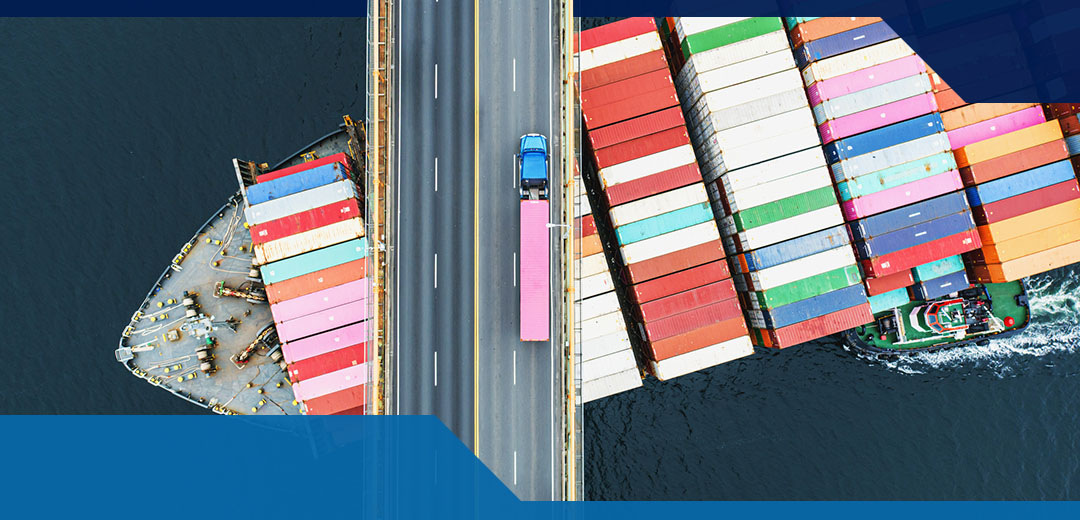
Understanding logistics and transport begins with technical terms and industry-specific jargon. This comprehensive freight shipping glossary defines all the essential words and terms to help you feel comfortable partnering with a logistics company and know what you are dealing with at each step of the way.
Accessorial Charge
Any additional cost to the standard pickup and delivery charges, whether fixed or variable.
This may include shrink wrapping, where the transporter rewraps a pallet to ensure the goods are safely delivered, or situations where the driver loads and unloads goods using a pallet jack. There could also be a layover accessory fee when the transporter arrives at the pickup point before the shipment, sometimes due to the clients’ delay or default or when the client requests additional stops.
Actual Time of Departure (ATD)
The precise time when the shipment leaves the point of origin. It focuses on accuracy and is more reliable than an estimated time of departure (ETD), which is generally based on expectations. The differences between actual and estimated departure times help the parties prepare for delays.
Aggregate Shipment
Multiple shipments from different sellers to a single consignee that the carrier consolidates into one shipment.
Air Cargo
Any commodity transported in an aircraft, whether passenger, cargo or combi airplanes. The cost of air cargo depends on the cargo’s actual and volumetric weight. Other factors such as ex-works, fuel surcharge, insurance airline terminal fees, documentation fees, door delivery, customs entry, customs duty and taxes may also influence the cost.
Air Freight
The shipment of goods using an air carrier. Air freight is typically used to transport time-sensitive, express goods at high security and efficiency. Air freight costs vary and may be determined by weight, destination and package type.
Air Waybill (AWB)
An unnegotiable contract for carriage that controls cargo routing while in the air carrier or a consolidator’s possession.
Alongside
Goods shipped alongside are placed on the barge, quay or dock within reach of the ship’s rigging for easy loading onto the ship.
Under the Incoterms 2020 rules, free alongside ship (FAS) means the seller performs their obligations when they make the goods available alongside the vessel, which the buyer nominates at the named port. The buyer assumes all responsibility, risks and costs of loading the goods on their transport and getting them to the final destination.
Apparent Good Order
A confirmation that the freight appears to be free of damage after assessment.
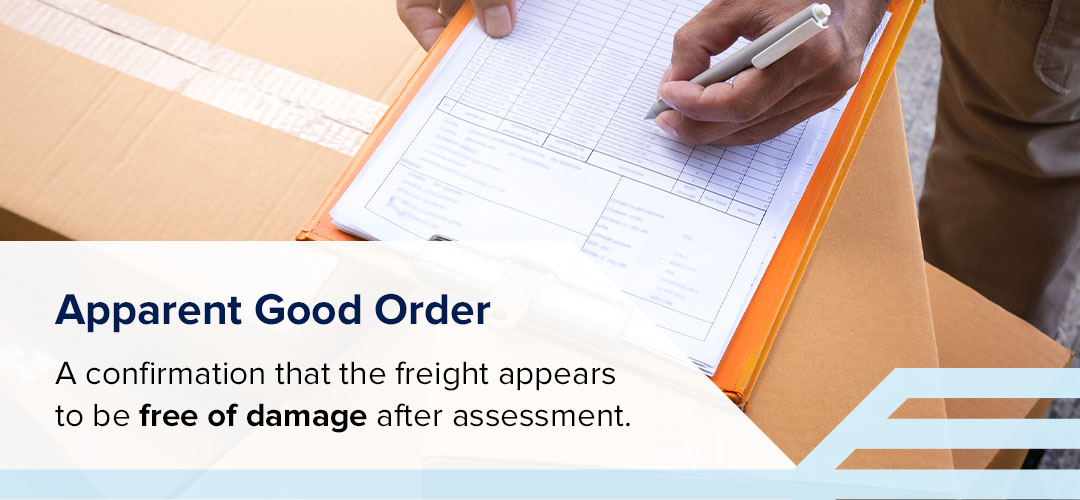
Arrival Notice
An alert or notification provided by the carrier when the shipment arrives for the consignee or notify party.
Automated Commercial Environment (ACE)
The online portal for reporting data to the Automated Export System for exports from the United States and customs filing for imports into the country.
Automated Export System (AES)
A system that the U.S. government uses to collect export data. The data collected is called Electronic Export Information (EEI). In most cases, the law requires exporters to file the EEI through AES for each shipment.
This helps the U.S. Census Bureau compute trade statistics like gross domestic product. U.S. Customs and Border Protection (CBP) also uses the data to ensure exporters comply with export regulations.
Backhaul
The return trip for a commercial truck transporting freight while retracing its original route. The journey is mapped to ensure the trailer is always loaded. When the truck completes its delivery route, it returns to the carrier to pickup new shipments.
An arrangement is made with brokers to secure new shipments following the same return route, often at a slightly reduced rate. This helps carriers eliminate added expenses such as fuel.
Beneficial Cargo Owner (BCO)
An importer who takes control of a shipment upon arrival and assumes various property rights without legal title passing to them. The importer uses their logistics assets instead of relying on third-party sources like freight forwarders or non-vessel-owning common carriers (NVOCC).
Billable Weight
A method for calculating shipping rates based on the package’s dimensional weight — the width, length and height — and the shipment’s actual weight. The most significant between these two is used as the billable weight.
Bill of Lading (BOL)
A document that serves as a contract between shippers and carriers, a document of title, and a receipt for services rendered. The BOL contains the relevant information to help the carrier correctly execute the freight shipment and invoice.
The BOL is presented at the pickup point and signed by both parties after inspection. The shipper must read and understands the terms and conditions contained in the document before signing.
Bonded Goods
The dutiable landed imports stored under the customs authorities’ supervision in a bonded warehouse. Typically, bonded goods are released for re-export or to the importer upon assessment and payment of import duties, taxes and other charges.
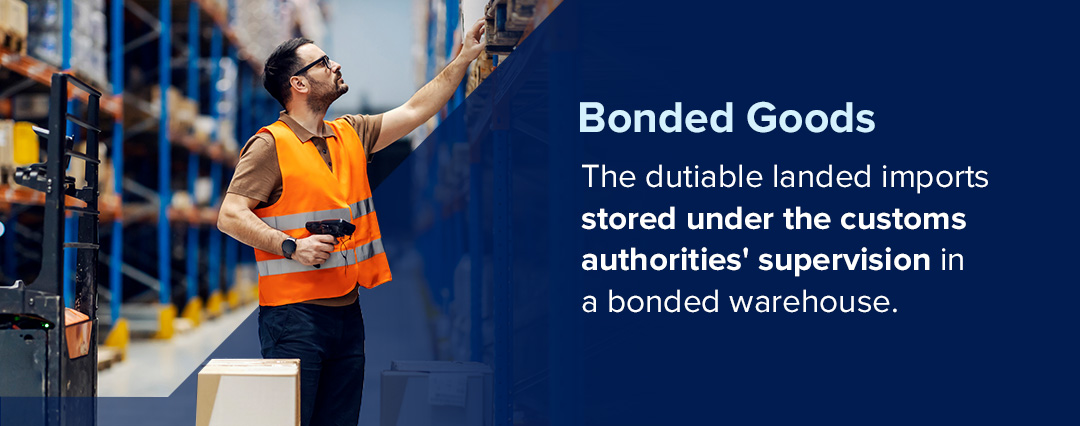
Bonded Warehouse
A secure location where goods are stored for processing before delivery. Bonded warehouses may be privately or government-owned and differ from ordinary warehouses because they hold bonded goods until the payment of customs duties. Some bonded warehouses also serve as storage facilities for restricted items.
Cabotage
Transport of goods between various destinations within a country by a foreign transporter.
Carrier
Freight carriers are individuals or companies that offer transportation between the seller and the destination. Global freight carriers transport goods across countries, while domestic carriers operate within the boundaries of a country. Some carriers provide both international and domestic services.
Cargo
Goods being transported from one location to another.
Cargo Insurance
Insurance coverage that protects shipments against theft, loss and damage during transit.
Cash on Delivery (COD)
A mode of payment where the payment is made upon delivery rather than in advance. Payment may be executed by cash, money order or cashier’s check. COD is common because it allows the receiver to inspect the goods to ensure they are in good condition before they make the payment.
Charter Party
A contract where the owner of a ship or vessel lends some or part of the vessel to another person for a specified period and a selected location or locations. The shipowner remains in control of the navigation and management of the vessel, but the charterer engages its carrying capacity.
Claim
A demand made on a transportation company for goods lost, stolen or damaged while in their possession.
Co-Loading
An arrangement where companies share space in a container or vehicle and divide the cost according to their respective segments. It allows competitors to work together to defeat challenges in the supply chain, such as transportation charges, demand fluctuations and changing customer preferences.
Consignee
A person to whom goods are to be delivered. The sender of the consignment is called the consignor.
Contract of Carriage
Agreement between a user and a carrier. A user can be a consignor or consignee. The contract states the duties, rights and liabilities of the parties. There are many forms of contracts of carriage, including billing of lading, charter party and waybills.
Courier
A company or employee of a company transporting packages. Couriers could be domestic or international, or both.
Customs Broker
An individual, corporation, partnership or association licensed and regulated by the U.S. CBP to help importers and exporters meet federal import and export requirements.
Deadhead
A situation where a driver returns to the point of origin or market without carrying freight.
Declared Value
Value of the freight declared on the BOL during pickup. Declared value is often used for customs or claims purposes.
Detention
Fee assessed by a carrier when a truck is held up at pickup or delivery longer than the allotted time.
Dispatch
Dispatch means an order is packed, shipping documents are prepared and goods are handed over to the delivery agent or forwarding company but are yet to be sent to the buyer.
Diversion
Also known as re-consignment, diversion is when freight is diverted to a different location while in transit.
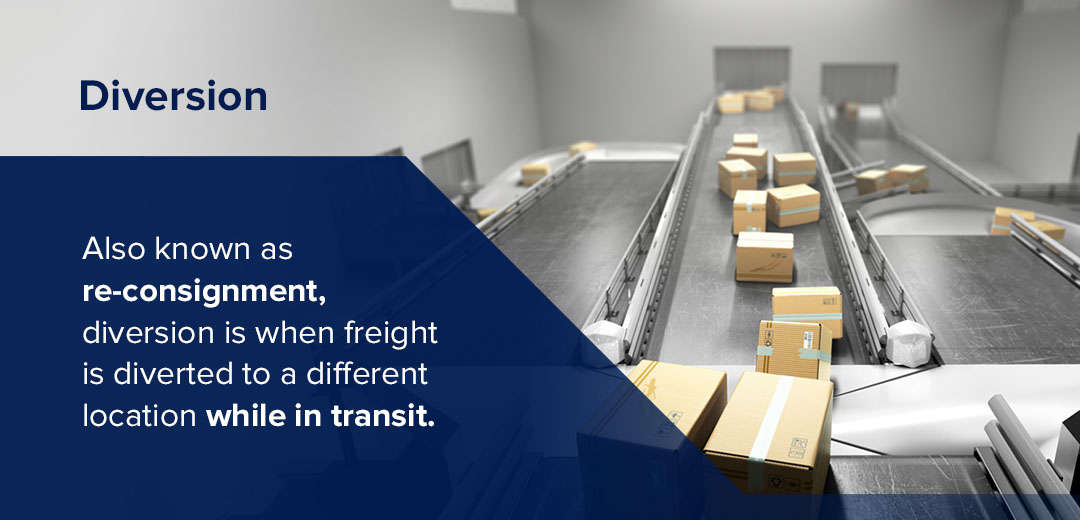
Electronic Data Interchange (EDI)
Transmission between computers used primarily in freight to schedule pickups with carriers through a transportation management system.
Estimated Time of Arrival (ETA)
The time a transport system is expected to arrive at a specific destination.
Estimated or Expected Time of Departure (ETD)
When a transport system is expected to leave its point of origin.
Expedited Transport
When logistics companies prioritize a shipment within short notice to ensure they are delivered on time. This usually costs more than regular shipping services.
Flatbed
Equipment used in truckload shipping to transport large items or machinery.
Force Majeure
A common law clause inserted into a contract to exempt parties unable to perform their obligations due to events beyond their control, like natural disasters.
Fourth-Party Logistics (4PL)
As in the case of 3PL, a business outsources its logistics solutions to a third-party company, but the company also takes over the organization, planning and management of the business’s entire supply chain.
Free on Board (FOB)
FOB means the buyer takes responsibility for all charges or liabilities at the point of origin of the freight.
Freight Bill
The carrier’s invoice for payment of transportation services rendered.
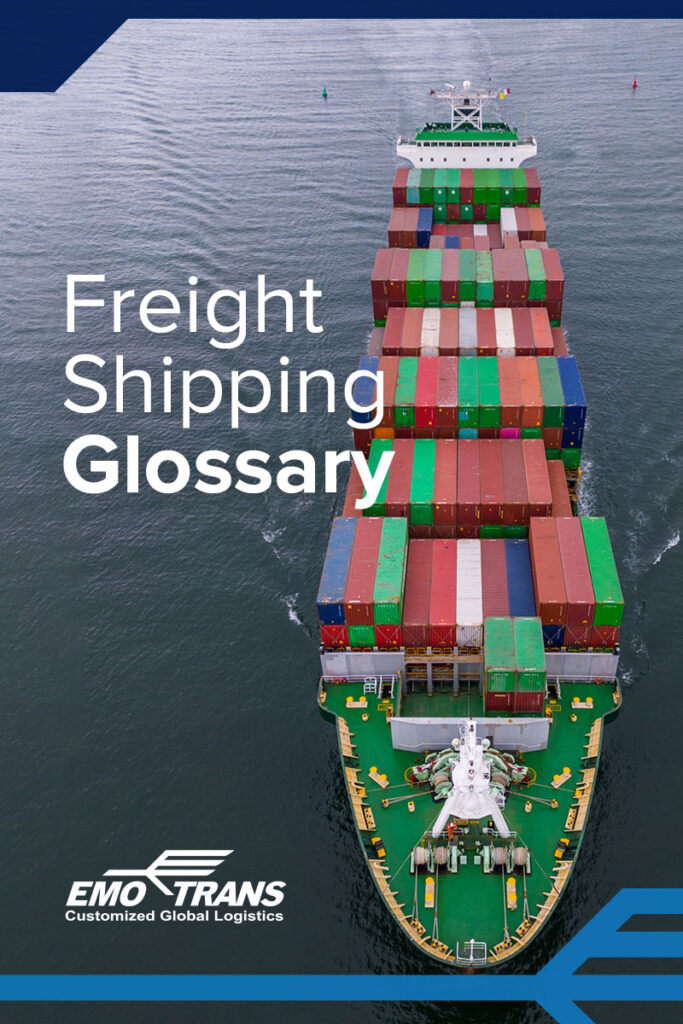
Freight Broker
A person who brokers between freight carriers and shippers. They have access to a vast network of carriers, allowing them to find those near the pickup location.
Brokers ensure the smooth and on-time delivery of freight. Shippers may contact them for information about the shipment and rely on them for services, including negotiating, planning and tracking. Brokers help carriers optimize shipping routes and backhauls to increase revenue and efficiency.
Freight Payables
The freight bill in need of payment.
General Rate Increase (GRI)
The amount by which ocean carriers increase their base rates across specific lines during a set time frame, generally as a result of increased demand.
Green Freight
Strategies, policies and practices designed to steer the movement of goods with reduced negative environmental impacts.
Gross Vehicle Weight Rating (GVWR)
The maximum amount of weight a vehicle can carry. It includes the curb weight plus the weight of passengers, fuel, cargo and any added weight. It is a safety standard used to prevent overloading.
Harbor Maintenance Fees (HMF)
Standard freight costs charged by customs on commercial cargo shipped through seaports.
Harmonized System Code (HS Code)
An internationally standardized system that classifies globally traded commodities. Customs authorities worldwide use the HS Code to identify products when assessing taxes and duties and for gathering statistical information.
Hazardous Materials
Substances that are radioactive, poisonous, toxic, flammable or explosive, capable of causing injury or death from exposure.
HAZMAT
Hazardous materials.
Import Duties
Payment levied on the import of goods.
International Commercial Terms (Incoterms)
The standard terms used in sales contracts for importing and exporting. They define responsibility and liability for goods throughout a shipment.
Inland Haulage Charges (IHC)
Transportation costs paid for moving freight from the seaport of loading to an inland container depot (ICD) or cargo freight station (CFS) and vice versa.
Inspection Certificate
A document used to signify the inspection of shipped goods and certify they conform to the terms and conditions of the sales contract. Inspection certificates are required on specific goods like perishable items and industrial equipment.
Intermodal
A form of transportation where goods are moved in the same shipping container through different transportation modes. Loading cargo into intermodal containers allows seamless shipments between trucks, trains and cargo ships. Typically, intermodal shipments fall within one of two categories — international and domestic intermodal.
Less Than Container Load (LCL)
Any shipment that does not take up the total capacity of a shipping container. In other words, the cargo has small volumes or dimensions that do not fit the entire container. The opposite is a full container load (FCL).
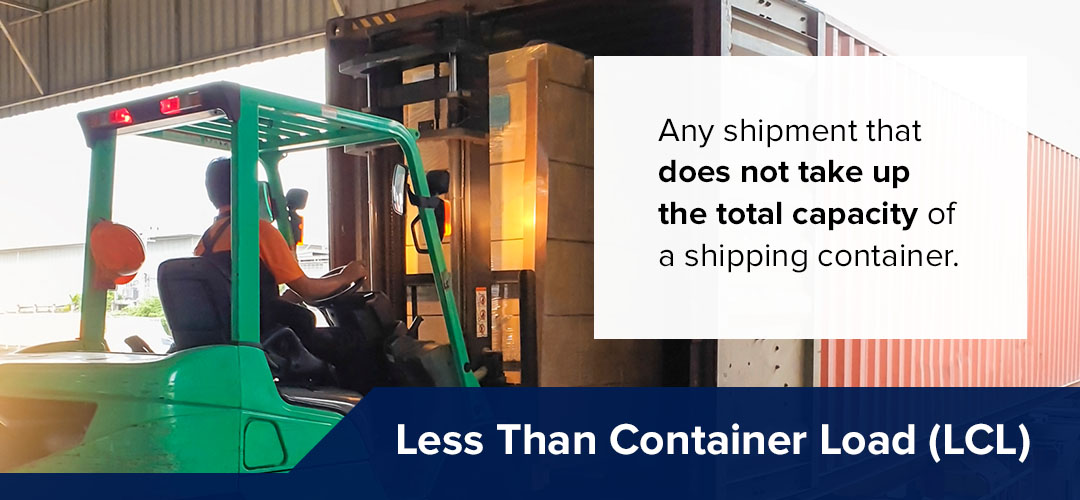
Less Than Truckload (LTL)
When the cargo in a truck does not fill up the entire truck. LTL is often used for small shipments.
Letter of Credit
Contractual commitment from the buyer’s bank guaranteeing payment to the seller once goods are delivered and the relevant documents are presented. As a trade finance tool, letters of credit are designed to protect importers and exporters.
Letter of Indemnity
A document provided by the shipper that guarantees taking responsibility for harm or loss caused by a breach of contract.
Lift On, Lift Off (LO-LO)
The charge for lifting a container on and off a train, vessel or cargo ship.
Long Haul
A long-distance driving transportation system where drivers take scheduled breaks.
Main-Line Operator (MLO)
A carrier who employs vessels in the principal trading routes without participating within a consortium.
Manifest
The entire cargo listing aboard a vessel, as required by the relevant local authorities, such as customs.
Marking
Letters, numbers and symbols placed on packages for identification purposes.
Maritime
Relating to sea transportation.
Master Billing of Lading
A contract of carriage between the shipper and the carrier issued by the carrier to the operator, freight forwarder or customer. The MBL is a document of title.
Material Safety Data Sheet (MSDS)
A document containing information about a hazardous material’s chemical, physical, explosive and radioactive data in shipment. The exporter typically provides the MSDS through the manufacturer along with a UN Number, a four-digit code assigned to hazardous chemicals.
MC Authority
Also known as the MC number, the MC authority is a unique identifier and interstate operating authority given by the Federal Motor Carrier Safety Administration (FMCSA) to transport companies operating across state lines.
The government uses the MC authority to stay informed with the company’s safety records like registration status, compliance reviews, crash investigations, ratings and inspections.
Motor Carrier
A company moving cargo across destinations for a cost.
Net Weight
The weight of goods without the packaging.
Non-Binding Estimate
A quote based on the weight of the clients’ goods, but the charges may change depending on the actual weight moved.
Non-Vessel Owning Common Carrier (NVOCC)
An individual or company that arranges shipments without owning or operating any freight vessel. An NVOCC is often used interchangeably with a freight forwarder in the U.S.
Ocean Freight
The transportation of goods by sea.
Onboarding Bill of Lading
Receipt given by the carrier when the shipment has been physically loaded onto the cargo ship or airplane. The carrier will add a clause when they determine the goods are not in good condition when they receive them. Comparatively, a clean bill of lading signifies the goods were received and placed in the vessel in good condition without apparent defects or damage.
Open Air Transport
The use of trailers with opened roofs or sides to ship cargo.
Outbound Freight
Finished products being shipped from the manufacturer to the customer or the distribution channel.
Packing List
Shows the order in which the goods are packed for inspection and shipment purposes.
Pallet
A platform on which packages are loaded.
Payee
The party receiving payment in a transaction.
Pickup Window
The time it takes for goods to be picked up for transportation.
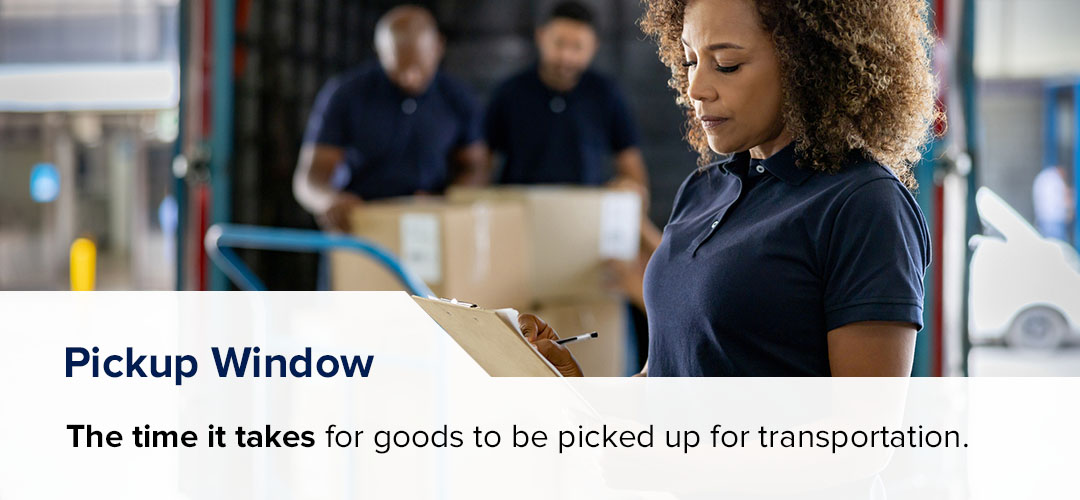
Place of Delivery
The location where cargo leaves the carrier’s custody.
Place of Receipt
The location where cargo enters the carrier’s custody.
Power of Attorney
A legal document that grants a person the authority to act for another person.
Proof of Delivery
A document indicating the customer’s receipt of the goods.
Reefers
A refrigerated container used for transporting perishable goods.
Relay
Transfer of containers from one ship to another with both ships being controlled by the same carrier.
Revenue
Carrier’s payment for transporting goods.
Roll-On, Roll-Off (RORO)
A vessel for carrying wheeled cargo.
Sanction
An embargo enforced by one government against another.
Sea Waybill
A document or transport contract between the shipper and the carrier which counts for goods loaded on board. In contrast with a BOL, a sea waybill is not a document of title.
Service Agreement
Also known as a service contract, a service agreement is a private agreement between one or more shippers and one or more carriers to transport goods between specified locations under terms of carriage agreed upon and listed in the contract.
Shared Truckload (STL)
A freight mode that enables multiple shippers to share trailer space in one multi-stop truckload.
Shipment
Delivery of parcel.
Shipper
Also called a “consignor,” a shipper is responsible for or owns the goods being transported.
Shipper’s Letters of Instructions (SLI)
A document provided by an exporting company to the freight forwarder detailing instructions for the freight forwarder.
Stackable Freight
Freight that can be stacked on top of one another.
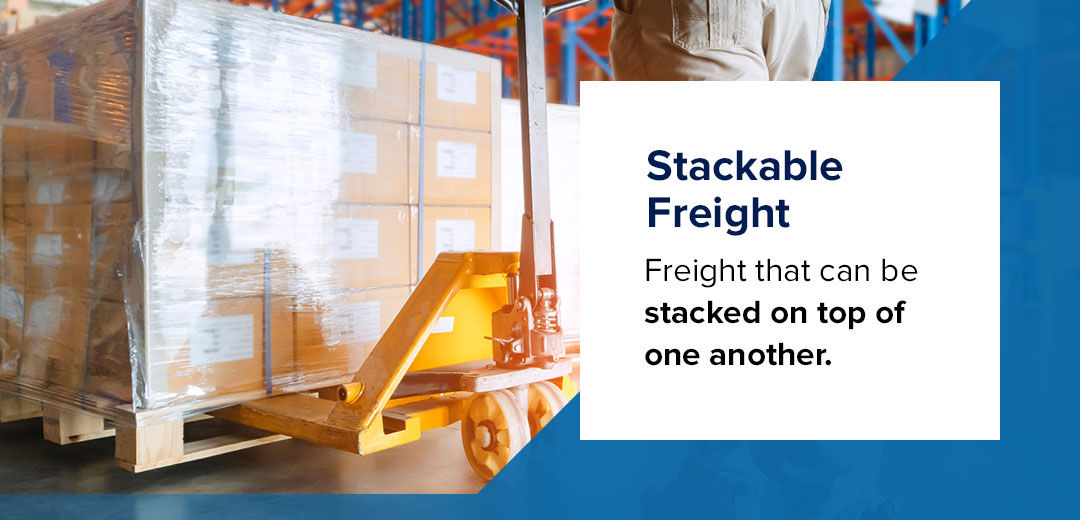
Stripping
Removing cargo from a container
Tail
The backside of a trailer or container. Opposite of nose or front.
Tare Weight
Weight of an empty container.
Tariff
List of published rates, rules and regulations applicable to cargo transportation in defined trade lanes or between two points.
Tarping
Covers goods on an open trailer while in transit.
Team Driver Transport
A truck with more than one driver, who take turns driving.
Terminal
Also known as a “container terminal,” a terminal is where containers are picked up, dropped off, maintained and stored. Freight may also be sorted and redistributed at the dock onto different trucks.
Terminal to Terminal Transport
Moving load from one terminal to another.
Third-Party Logistics (3PL)
This is where an organization outsources logistics solutions to a third-party company with the infrastructure and capability to execute processes, including inventory management, warehousing, packing, terminal operations, shipping and customs brokerage. 3PLs liaise with shippers and carriers, and many offer volume-discounted rates. 3PLs assist shippers in navigating complex logistics solutions to streamline commerce. The company may retain oversight of its whole supply chain.
Tracking
Monitoring the location of your goods while in transit.
Trailer
A container attached to the back end of a truck.
TWIC Card
“TWIC” is an acronym for Transportation Worker Identification Credential, a document that the Maritime Transportation Security Act requires anyone who needs access to secure areas, such as vessels and maritime facilities, to possess. The Transportation Security Administration (TSA) conducts a background check on TWIC applicants to determine eligibility before issuing.
Ullage
The space left unfilled with liquid in a drum or tank.
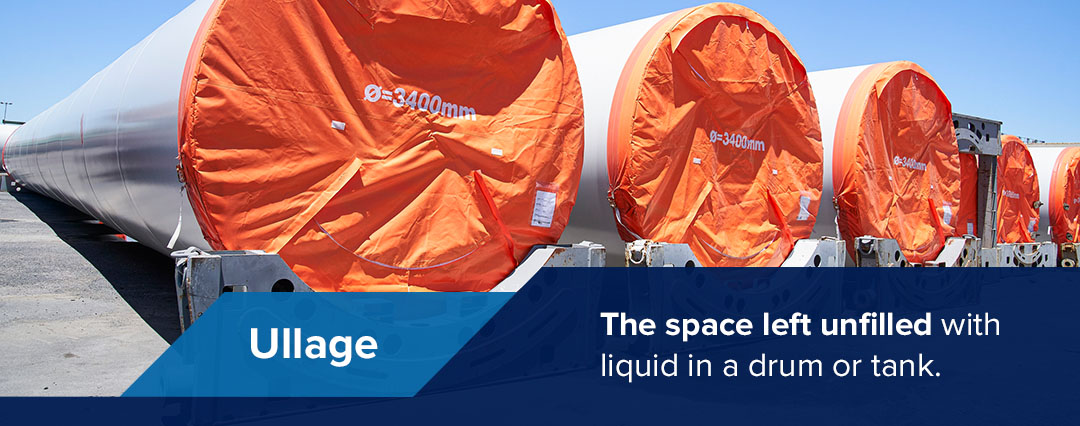
Unclaimed Freight
Freight that has not been called for or picked up by the owner or consignee.
Valuable Cargo
A consignment with one or more valuable cargo.
Vented Van Trailer
A type of trailer with aeration holes at the front and rear.
Vessel
A mode of transportation on the sea.
Volumetric Weight
The calculation used to measure the amount of space a cargo needs during transportation.
Warehouse
A storage facility for cargo.
War Risk (WR)
Marine insurance coverage for goods lost to war.
Waybill
A document issued by the transport company providing information and instructions regarding the shipment.
Weigh Station
A place where the state highway patrol or Department of Transportation (DOT) examines the weight of a vehicle.
Yield
Revenue per unit of traffic.
Zonate
Marked with or arranged in zones.
Partner EMO Trans for Customized Global Logistics
EMO Trans is a single-source international logistics and transport company that helps clients transport goods through multiple modes. We are deeply invested in understanding your needs and goals to offer the best solutions. EMO has various accreditations and years of experience, so you can be sure your goods are safe. Request a quote today.

